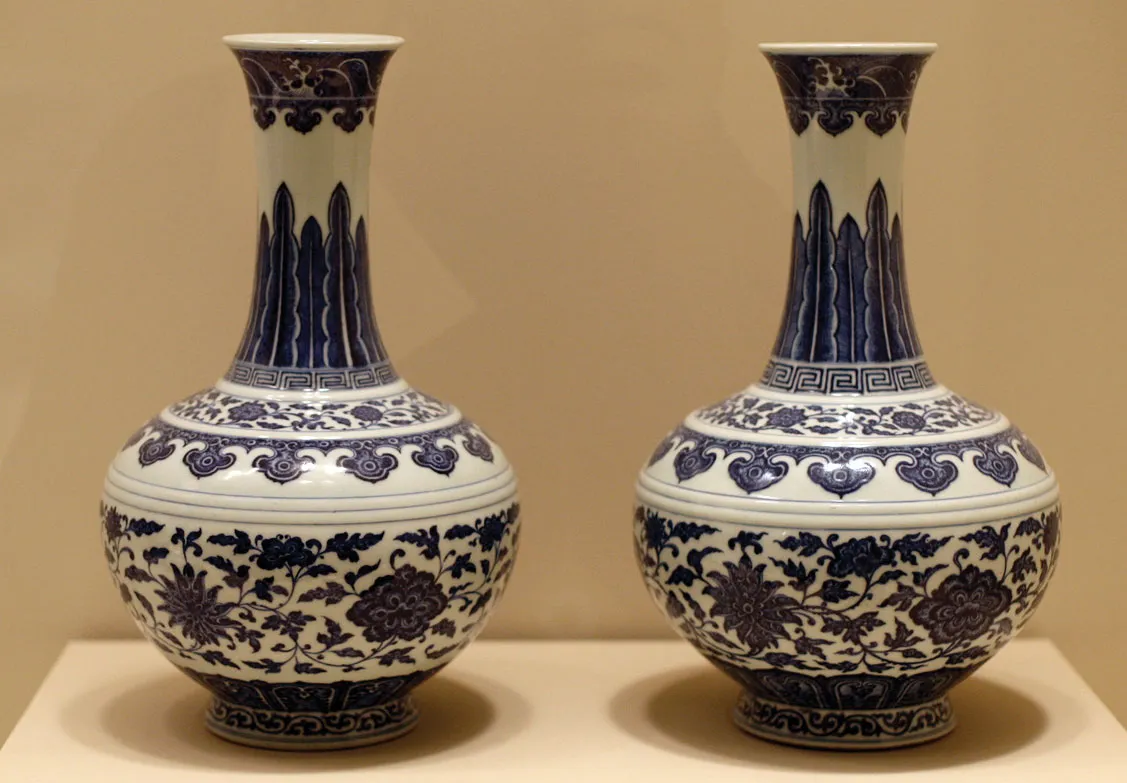China is known throughout the world for its cheap production of clothing, electronics, toys, furniture, and more. But one of China’s most iconic exports has nothing to do with mass production. Chinese porcelain. Since ancient times, Chinese people have made use of different materials to manufacture pottery and tableware.
Initially, these materials were used as food preservatives or for medicinal purposes. As time passed by and new techniques were developed, other types of tableware began to emerge. In the 19th century, a new type of porcelain—porcelain that has translucence like glass—was created at the Jingdezhen Porcelain Factory in Jiangxi Province.
The factory would go on to establish itself as one of the birthplaces of China’s modern porcelain industry in many ways.

Chinese Porcelain: An Overview
Chinese porcelain has a long history that dates back to the Warring States period (475 BC to 221 BC). The earliest porcelain was made from materials like kaolin, which is a clay mineral, or bone ash. During the Han Dynasty (202 BC to 220 AD), the Han court had the highest demand for porcelain.
However, it wasn’t until the Tang Dynasty (618 AD to 907 AD) that Chinese potters and artists began to make a regular supply of porcelain. The Tang Dynasty was important because it was when China began to make and export porcelain of good enough quality to establish itself as a major pottery and tableware producer.
Types of Chinese Porcelain
White Porcelain: White porcelain is often called “Russian” or “silk” porcelain because of its white color. White porcelain, which is often decorated with floral patterns, was popular during the Tang, Song, and Yuan dynasties. Green Porcelain: Green porcelain is a type of porcelain that’s been decorated with cobalt blue or natural pigment.
It’s been used since early times, but it wasn’t until the Tang Dynasty that higher quantities of green porcelain were made. – Black Porcelain: Black porcelain was first made in the Tang Dynasty. Before then, it was made as a paste made of several materials that were then fired. After the Tang, it became a type of porcelain that’s been fired at a lower temperature.
How Is Porcelain Made?
Chinese porcelain is made by heating clay and other minerals together with fiber that has been obtained from plants. The clay and the fiber are then shaped into a vessel; once it’s been fired, it’s smooth and shiny.
However, it’s important to note that the minerals and clay used in porcelain are important because they allow for a translucency that makes the pottery “look and feel” like glass. Chinese porcelain is fired at a low temperature and can also be painted or glazed.
Different colors may be used to decorate the pottery, and the decors may include Chinese designs or Western designs. This combination of ingredients and firing results in porcelain that has a translucent quality that makes it look like glass.
Major Manufacturers of Chinese Porcelain
The Jingdezhen Porcelain Factory in Jiangxi Province: The Chinese pottery and tableware industry began at Jingdezhen Porcelain Factory in Jiangxi Province. Located in the city of the same name, the factory was founded in 1350 and would go on to be a major producer of porcelain.
During its heyday, the Jingdezhen Porcelain Factory produced up to 150,000 pieces of porcelain every day. The Jingdezhen Porcelain Factory in Jiangxi Province: The Jingdezhen Porcelain Factory in Jiangxi Province was one of the first pottery and tableware production centers in China. The factory has been operational since the late 14th century, and it began as a government-run enterprise. The Jingdezhen Porcelain Factory in Jiangxi Province:
The Jingdezhen Porcelain Factory in Jiangxi Province was one of the first pottery and tableware-producing centers in China. The factory has been operational since the late 14th century, and it began as a government-run enterprise.
Important Figures in the Development of Chinese Porcelain
The First Porcelain Dynasty: Since ancient times, people in China have developed different techniques for the manufacturing of pottery and tableware. Porcelain was one of these technologies, and it was first developed by the First Porcelain Dynasty in Jingdezhen, Jiangxi Province.
The Jingdezhen Porcelain Factory in Jiangxi Province: Since ancient times, people in China have developed different techniques for the manufacturing of pottery and tableware. Porcelain was one of these technologies, and it was first developed by the First Porcelain Dynasty in Jingdezhen, Jiangxi Province.
Cultural References to Porcelain and Its Place in History
In the modern world, porcelain is often associated with Chinese culture. For example, Chinese culture often associates porcelain with the material’s translucence, which renders the pots and dishes “artistic and beautiful.” Chinese porcelain has been around for centuries, and it’s been used for several purposes. During the Han Dynasty, porcelain was used to preserve food. During the Tang Dynasty, however, it was used for social purposes, like flower vases and flower baskets.
Conclusion
Chinese porcelain has a long history as a type of pottery that’s been made in different areas of China since ancient times. During the Tang Dynasty, it was used for social purposes and decorated with Chinese designs and Western designs. Chinese porcelain is made by heating clay and other minerals together with fiber that has been obtained from plants. Once it’s been fired, it’s smooth and shiny.






